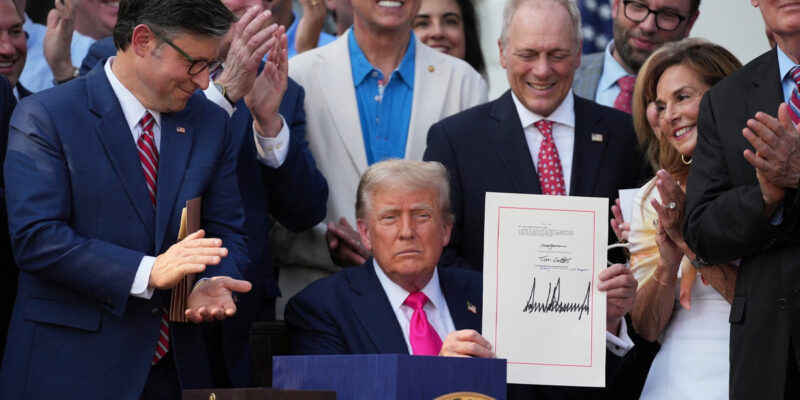The “Big Beautiful Bill” was enacted with President Trump’s signature on Independence Day. The vast majority of taxpayers will see minor to no change in the dollars they send to Uncle Sam. That’s because the bill simply extends the current tax structure provisioned by the Tax Cuts and Jobs Act (TCJA, Trump Tax Cuts) in 2017. That’s fantastic, giving taxpayers and businesses confidence and clarity.
There are a few key changes:
- Above the line (means the taxpayer gets the deduction, even if they don’t itemize) deduction for up to $25,000 of tip income for those who work in traditionally tipped occupations. About 5% of taxpayers would benefit from this provision.
- Above the line deduction for the *premium* portion of overtime compensation – $12,500 for Individual taxpayers and $25,000 for joint filers. Approximately 8% of the workforce.earned OT pay last year.
- While the measure did not exempt Social Security income from federal taxation, a senior bonus to the standard deduction of $6000 is provided. Presently, the SS benefits for about 40% of all Social Security recipients are subject to federal income tax. This provision would more than double the number who pay no taxes on their SS benefits. Applies to taxpayers with an AGI of $75,000 (single) and $150,000 (joint)
NOTE: All 3 of these expire at the end of 2028.
This legislation is pro-growth, and pro-business.
By FAR, unequivocally – the business provisions are the most consequential to America and Americans. Those include restoring 100% immediate expensing of investments in machinery, equipment, and other eligible property; full expensing of R&D costs, and; full expensing of new factory construction, and other assets used in production.
While the bill actually increases spending to an average of $8.6 trillion per year (current outlays are $7 trillion), the administration expects massive economic growth to offset increased spending and bring down deficits.
Based on the current tax to GDP ratio, which has been static for decades, our GDP Would need to increase on a nominal basis by 41% (approximately $12 trillion ) with spending staying level to balance the budget.
That would require an increase of GDP at compound annual growth rate (CAGR) of approximately 3.6% over 10 years.
Again, that assumes spending remains static, which, of course it will not. I’m hoping that now that a tax and regulatory environment conducive to sharp economic growth have been implemented, the Congress will gets serious about bending the spending curve. That’s the only way we’re going to see deficits shrink, allowing our runaway debt to be addressed.
Advertisement
Advertisement

